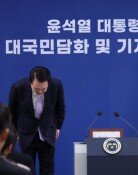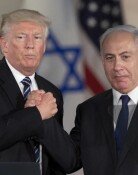Countdown for KSLV-1
Nuclear energy and space development are a massive undertaking that only a country with enough power can carry out. The U.S. has sent space shuttles to transport 24 tons of cargo to an international space station. Russia, Japan and China have space launch vehicles capable of sending low-orbit satellites weighing eight to 18 tons. Koreas KSLV-1, also called Naro, is a space launch vehicle capable of sending a 100-kilogram satellite into orbit. Though the beginning of Koreas space development is not grandiose, the country aims to join the ranks of the worlds top 10 space powerhouses. Space development will determine national power in areas such as energy, communications, military, broadcasting, meteorology, ocean research and astronomical observation.
KSLV-1 is Koreas base to develop a genuine space launch vehicle. The core of a space launch vehicle is the first-stage rocket. The successful launch of the KSLV-1 will allow the development of the genuine space launch vehicle KSLV-2, which is capable of sending a 1.5-ton satellite into orbit. Russia maintained tight security when it sent its first-stage rocket April 5 to Naro Space Center in Goheung, South Jeolla Province. All the equipment related to the first-stage rockets operation was brought from Russia. Russian technicians sealed a computer room having related data whenever they left it. A fifth of Russian staff comprise security officials. Korea faces this humiliation since it lacks space technology.
A space launch can fail despite having a preparation success rate of 99.9 percent. All devices must operate perfectly at the scheduled time. The launch of the KSLV-1 last year failed because a fairing that protected the satellite did not separate from the rocket. Korea has since learned a valuable lesson. The head of the Naro Space Center, Min Kyung-joo, said, Russian technicians looked down on us but Russia is asking us to participate in a project to develop a space launch vehicle called Angara.
The U.S., the world leader in space development, spends 180 times more money on space development than Korea and has 20 space launch vehicles. Korea has the potential to keep up with countries possessing advanced space programs. Korea grew into the world shipbuilding leader in a short period. In early June, before the annual rainy season begins, the second attempt to launch the KSLV-1 will be carried out. Hopefully, the launch and Koreas subsequent development of the first-stage liquid rocket will be successful. Mins given name, Kyung-joo, means star and space in Chinese characters, so maybe he is a born space developer. Center staff also say, To the skies and to space, when they toast.
(From the Naro Space Center in Goheung)
Editorial Writer Lee Jeong-hoon (hoon@donga.com)







